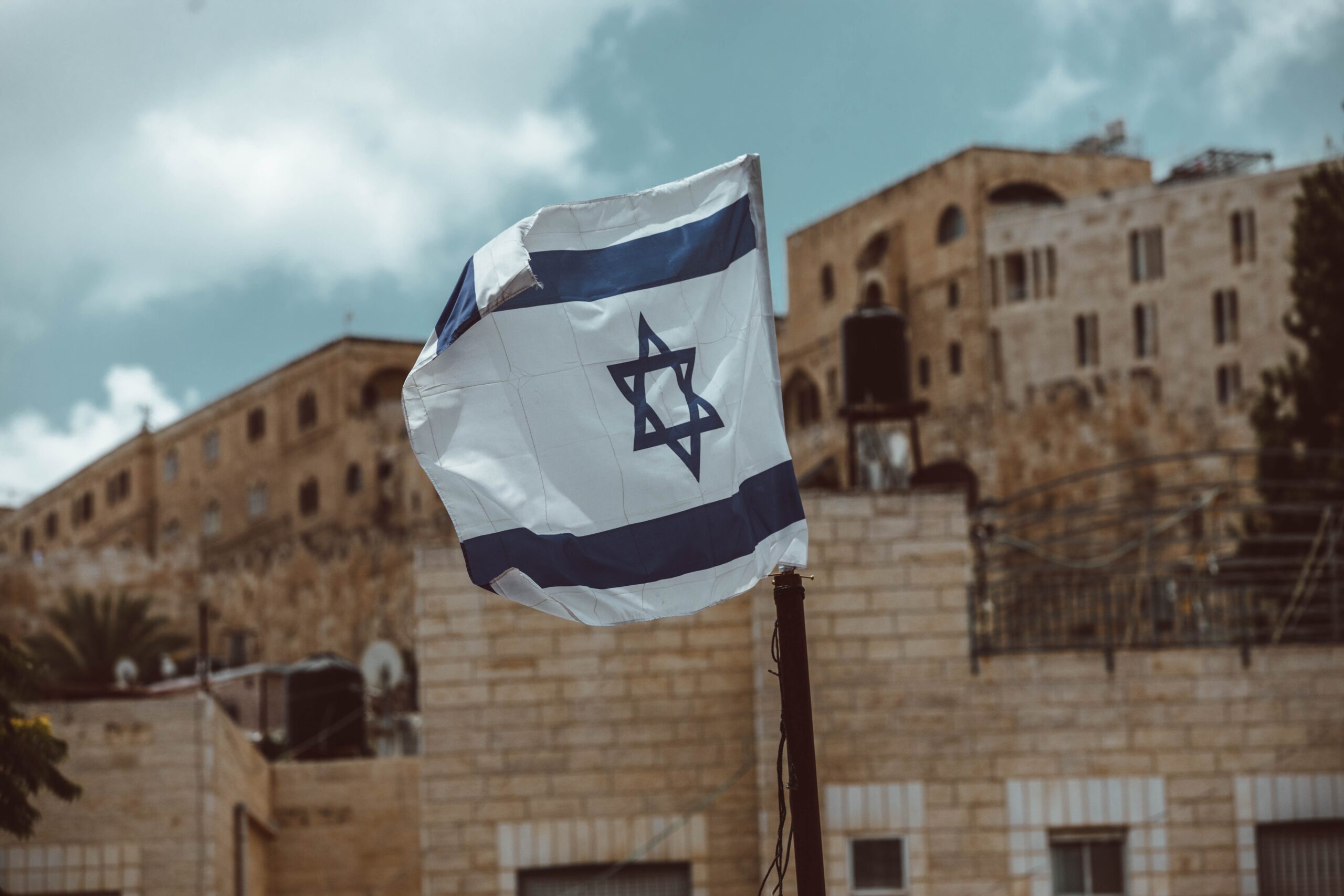The EEA option a.k.a The “Norway option” involves joining the European Free Trade Association (EFTA) and trading with the EU via the European Economic Area (EEA) as a means of achieving an economically secure, de-risked Brexit.
It greatly simplifies our time limited negotiations, protects our economy, answers the Northern Irish and Gibraltar question and greatly eases the concerns of Scotland. A bespoke trade agreement that adequately replicates our current trading relationship cannot be achieved in two years and that is why being part of the EEA as stage one in the long and complex process of leaving the EU is by far the most viable, sensible and achievable option.
The EEA option does not mean we would be trying to be Norway; we are two very different countries. It merely refers to adopting a similar framework in how we relate to the EU legally and economically. It should not be thought of as an alternative to EU membership, but as a means of facilitating our secession.
On Immigration
On immigration the respective situations of Norway and the UK are very different. Norway is party to the Schengen Agreement; it is a voluntary signatory and Schengen is separate from the EEA agreement. Being in the EEA does not require membership of Schengen. Norway also has land borders with the EU so the situation is not really comparable to the UK. We do have border controls and far more scope to manage immigration though good domestic policy, which has been sorely lacking.
On Freedom of Movement
The EEA freedom is limited to free movement of workers. Free of the Charter of Fundamental Rights we could limit free movement to workers and refuse entry to dependents on people who are not economically active.
More importantly, despite the apparent uncompromising position of Commission officials and some European leaders; the EU has been quite willing to negotiate with EFTA/EEA states on freedom of movement. With Liechtenstein a precedent has been set whereby via Article 112 of the EEA Agreement it has eventually moved towards a quota system. This proves that it is possible to manage immigration within the EEA.
What Norway pays and its European strategy
Those who proliferate the “still pay, no say” myth about the EEA option rarely go into any detail about what Norway pays to maintain its relationship with Europe. Most of what Norway pays into the system is not paid into the EU budget and EEA countries pay significantly less than the UK for their relations with the rest of EU.
Norway pays approximately £7,024,600 into the EFTA budget. It also makes a contribution to the economical rehabilitation of post-Communist countries via the “Norway Grants” which amounted to around €804 million in the period 2009 -2014. This money is not paid to the EU.
Norway also provides 95 percent of the funding to the EEA Grants. The two together amounted to €1.8bn over the period, of which €1.71bn was paid by Norway. As with the Norway grants, the EEA grants are not part of the EU budget. They are administered by the independent Financial Mechanism Committee. They are not specifically payments for access to the Single Market. They are effectively part of Norway’s strategy for co-operation with the EU.
That, however, is not the full extent of relations. As of 2014, Norway participated in twelve EU programmes, including Horizon 2020, Erasmus +, the Consumer Programme and the Copernicus programme. It also has a bilateral arrangement for participation in interregional programmes under the EU’s Regional Policy. Additionally, it takes part in the activities of 27 EU agencies.
As for the budget for these activities, over the 2007-2013 multi-annual period, total EU spending was around €70 billion, of which the estimated EFTA contribution was in the order of €1.7 billion – averaging approximately €250 million a year. Norway carried 95.77 percent of that cost (€1.63bn). This cash, therefore, is for services rendered and, even then, the funding was not one-way. Around €1.01bn was returned from EU funds, making the seven-year net contribution in the order of €620m – or about €90 million a year.
Despite the campaign rhetoric of the Remain campaign, leaving the EU does not mean an end to mutually beneficial cooperation. We can and will be a constructive part of Europe, participating in joint programmes and EU agencies. Yes, this will cost money but the benefits far outweigh the upfront financial costs.
On EU “rules” and the “no say” myth
In October 2015 we contacted the EFTA Secretariat, which administers the EEA agreement, and found that approximately 21% of EU legislative acts in force (after allowing for repealed acts) applied to the EEA agreement. Since then, the number of EU laws has decreased (due to consolidation rather than removal of red tape) and the figures are approximately 5,000 out of 20,000 acts in force, i.e. about 1 in 4 EU laws are Single Market rules applicable to EFTA EEA states.
The tired canard that Norway has “no say on the rules” is of the Single Market is particularly stubborn, not least because its proliferated by Norwegian Europhiles still keen on accession and with an interest in preventing Brexit.
This myth is disproven by the EEA agreement itself:
According to the principle of unanimity applied in the EEA Joint Committee, all the EFTA states must agree in order for new EU legislation to be integrated into the EEA Agreement and for it to apply to cooperation between the EFTA states and the EU. If one EFTA state opposes integration, this also affects the other EFTA states in that the rules will not apply to them either, neither in the individual states nor between the EFTA states themselves nor in their relations with the EU. This possibility that each EFTA state has to object to new rules that lie within the scope of the EEA Agreement becoming applicable to the EFTA pillar is often referred to as these parties’ right of veto.
So far, this right has not been exercised. This is partly because when EU legislation is to be integrated into the EEA Agreement it is submitted to the EEA Joint Committee at the final stage of an extensive process of information and consultation between the contracting parties. The purpose of this process is to ensure that agreement is reached on such decisions. During the negotiations on the EEA Agreement, compromises were found if a state had constitutional objections to the content or could invoke fundamental national interests. Even though constitutional problems are unlikely to arise in the day-to-day EEA work, the will to reach necessary compromises must still be regarded as a basic condition for cooperation.
Within the structure of EFTA (which hosts the EEA agreement) there is a range ofconsultative bodies, including the EEA Council, three joint committees and then over 30 working groups. There is also the EFTA surveillance authority and the court. Thus, to assert that Norway has no say is completely untrue, unambiguously so.
Norway has the ability to protect its sovereignty and has used it when necessary, including refusing to implement proposed regulations that would cover offshore drilling.Oil and Gas UK objected too but the British government had no such defence.
An example often given to exemplify the lack of Norwegian influence is that of amanufacturer of hot water tanks that found that its entire range fell foul of new size regulations designed to conserve energy since Norway’s officials were “not party to discussions on the issue.” This is now a cliché in the tradition of anti-Norway option articles.
It refers to the Norwegian domestic heating manufacturer called OSO Hotwater and is based on the complaints of its boss Sigurd Braathen who has claimed that he discovered “overnight” that the EU was introducing new environmental and energy efficiency standards that favoured gas powered boilers over electric ones and would render half of Oso’s products useless and unsellable. His sob story, however, crumbles under scrutiny.
Legislation like this does not pop up overnight or come about unexpectedly. The instruments in question appeared in June 2010 as the draft Commission regulation with regard to ecodesign requirements and delegated regulations for energy labelling of local space heaters, and also Commission Delegated Regulations of 18 February 2013 supplementing Directive 2010/30/EU with regard to the energy labelling of water heaters, hot water storage tanks and packages of water heater and solar devices.
As delegated legislation, this had been well signalled, stemming from a 2010 directive, the nature of which had been the subject of much discussion. The particular feature of the legislation that was causing such concern was the inclusion of electric heaters.
However, contrary to the myth Norway was not helpless and without allies in the face of EU regulation; this is an example of Norway building alliances in order to exert influence and help push back and force the Commission to rethink. The whole heating industry was outraged by this; not only did Norway object, but the issue was taken up by the Nordic Council of Ministers, which included Sweden, Finland and Denmark.
It is simply untrue to assert that Norway did not have a say. It represented itself and worked through the Nordic Council and via the standards bodies, it had access to CEN and CENELEC, and through them to the Commission. It was an influential element of the technical system that was telling Brussels their regulations were a bad idea in need of redesign.
It took until August 2013, more than three years after the draft regulations had been published, for the highly revised regulations to come into force, during which period the Norwgians were fully consulted.
It is therefore impossible to feel sympathy for Sigurd Braathen because he should have been fully aware of the process and he has suffered only because of his own negligence. The EU was transparent in publishing its intentions. The standards bodies are not EU institutions and all participating states are consulted through their own standards agencies, in which consumer groups, manufacturers and trade guilds are involved in the process. This at the very beginning of the process before it goes anywhere near the EU parliament for discussion – and incidentally, the best way of influencing the substance of regulations.
In any case, these energy efficiency standards are embodied in EU law and derive from international standards such as ISO 14040. In this there is a global hierarchy If there is a global standard, then trading blocs and WTO members must adopt it. They can embellish it locally, but not in such a way as to create a trade barrier. For international trade purposes, the international standard takes precedence over the local standard, and as long as the exporter complies with the international standard, the importer nation (or bloc) can’t refuse it. If OSO had produced to the global standard there wouldn’t have been a problem.
So Norway is able to influence the EU rules that affect it and register a reservation. Crucially, the substance of much EU regulation is derived from international standards and the quasi-legislation of the multitude of international organisations that make up the developing global regulatory system. At a global level Norway is active and engaged able to speak and act independently and wield a veto when necessary.
On the international stage
Norway punches above its weight in the world and is able to act independently at an international level. As a Member State Britain is bound by Treaty to represent the EU position in international organisations and at international conferences, in the EEA we will gain the ability to pursue our own agenda and build alliances and coalitions flexibly and freely.
Helle Hagenau, formerly the international officer of the Norwegian No2EU campaign,spoke enthusiastically to us about Norway having “kept its political independence both nationally and internationally”. This has been “especially valuable in dealing with the United Nations”, she told us:
“When the Norwegian government decides to promote a certain point of view at the UN General Assembly, we just do it”, she said. “There is no need to negotiate with numerous other countries and an EU Commission, resulting in a watered down version of that message“.
She recalled how, when she was a member of the official Norwegian delegation to the UN General Assembly in New York, she had both the Swedish and Danish delegations tell her that they had asked the Norwegians to present their case to the UN. They had been unable to do so themselves, constrained as they were by the “common position” within the EU.
Anne Tvinnereim, formerly state secretary for the Ministry of Local Government and Regional Development, told a similar story. With Sweden bound by the EU common position and forced to informally ask Norway to represent a different position within the UN.
Fishing
The importance of the fishing industry was pivotal to the Norwegian refusal to join the EU, meanwhile Edward Heath was quite willing to destroy our own in his desperation to join the EEC.
Agriculture and fishing are excluded from Norway’s agreements with the EU and much is made of the high protective tariffs driving up prices and thousands of jobs being exported out of Norway. This is, again, an oversimplified view of something a mite more complex and again we have the caricature of Norway as a passive victim.
Norway has had something of a difficult relationship with the EU over its fish exports and is not exactly innocent in this as it has a record of predatory pricing and “dumping” its surpluses. Trade barriers were first erected back in 2004 after complaints that Norway had been flooding European markets with cut-price Salmon, to the detriment of Scottish salmon farmers. These anti-dumping measures were repealed in 2009 but currently tariffs are raised again.
Nonetheless, Norwegian exports are booming. It’s a good time to be a salmon farmer in Norway and profits are soaring thanks to worldwide exports which is down to trading agility. Norway has its own trade policy and is therefore free to trade with who it wants. It has a preferential tariff agreement with the USA, has a beneficial deal with China and huge exports to Japan.
As for the regulation of the industry; Norway is a serious player. When it comes to international rules on food, to ensure public safety and fair trading, the UN body Codex Alimentarius, is the “top table” as it makes most of the international standards regarding the production and marketing of food. Not only is Norway an independent member of Codex, it even hosts the all-important Fish and Fisheries Products Committee. Thus, it is the lead nation globally in an area of significant economic importance to itself.
When it comes to trade in fish and fishery product, Norway is able to guide, if not control, the agenda on standards and other matters. The EU then reacts, turning the Codex standards into Community law, which then applies to EEA countries, including Norway. But it is Norway, not the EU, which calls the shots.
Conclusion
Adopting the EEA option allows us to leave the EU in an economically secure way and minimise disruption. It is a transitional arrangement achievable within the two-year Article 50 deadline and therefore the only realistic option on the table. It is not perfect but it is not the final destination, just the first. Our relationship with the EU will evolve from there as we disentangle ourselves from forty years of integration.
The dynamic of the EFTA/EEA arrangement changes significantly with the addition of Britain as it will become a significant trading bloc in its own right. So although the EEA relationship at present is tilted in favour of the EU; with Britain joining the Association would be in a much stronger position to reform the sub-optimal parts of the Agreement. It also gives Britain the flexibility to work with EFTA countries in matters of trade but also act independently. It will create two Europe’s; one will be a supranational political and judicial union, the other a trade association.
This post was orginally published by the author 5 July 2016 https://thescepticisle.com/2016/07/05/in-response-to-the-common-misconceptions-of-the-eea-option/
 Daily Globe British Values, Global Perspective
Daily Globe British Values, Global Perspective



